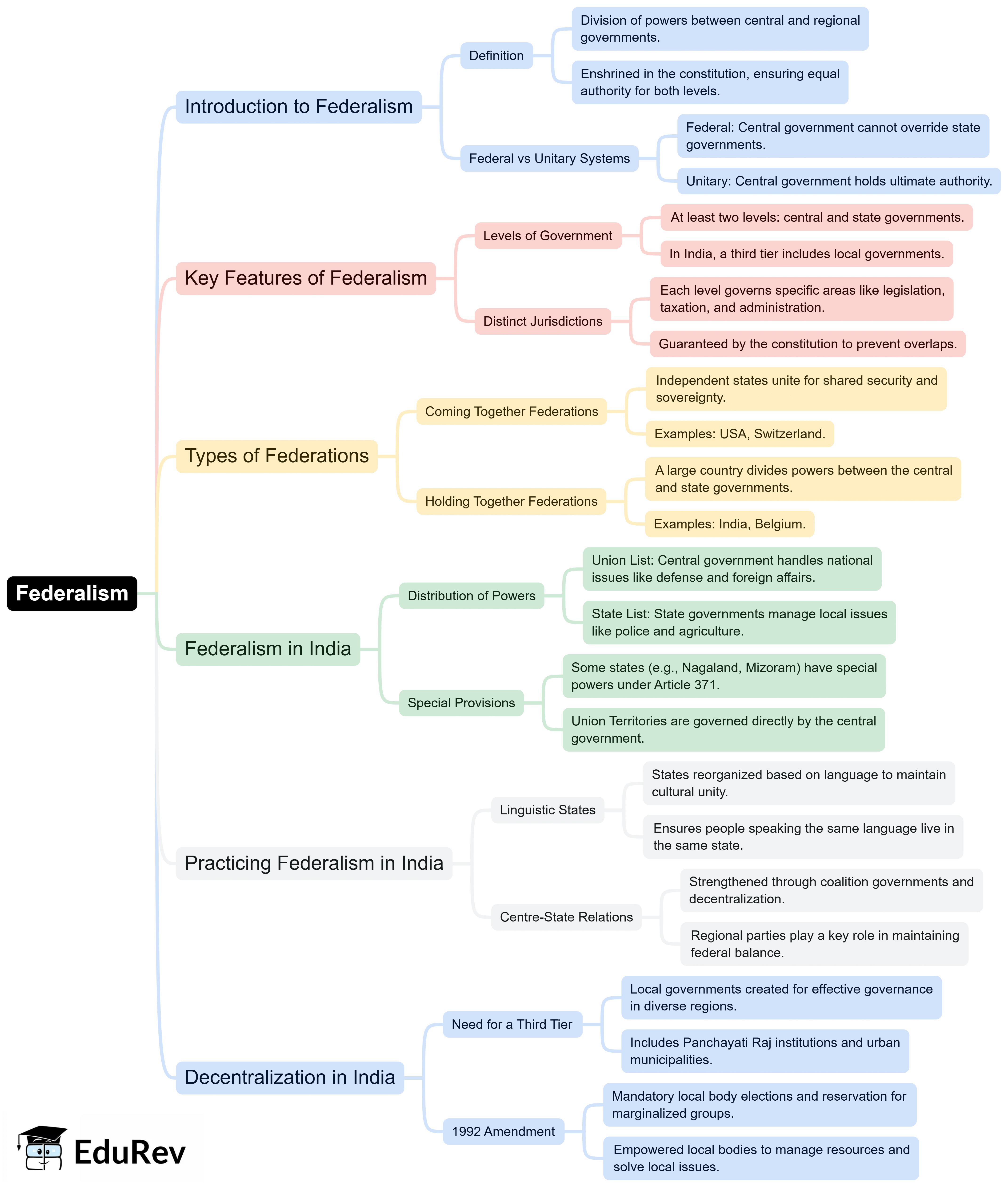Humanities/Arts Exam > Humanities/Arts Notes > Political Science Class 11 > Mind Map: Federalism
Mind Map: Federalism | Political Science Class 11 - Humanities/Arts PDF Download

The document Mind Map: Federalism | Political Science Class 11 - Humanities/Arts is a part of the Humanities/Arts Course Political Science Class 11.
All you need of Humanities/Arts at this link: Humanities/Arts
|
43 videos|268 docs|39 tests
|
FAQs on Mind Map: Federalism - Political Science Class 11 - Humanities/Arts
| 1. What is federalism? |  |
Ans. Federalism is a system of government in which power is divided between a central authority and various regional or state governments. It allows for the coexistence of multiple levels of government, each with its own powers and responsibilities.
| 2. How does federalism work? |  |
Ans. Federalism works by establishing a division of powers between the central government and regional or state governments. The central government is responsible for certain national matters, such as defense and foreign policy, while regional governments handle issues within their jurisdictions, such as education and healthcare. This division of powers helps maintain a balance between a strong central authority and regional autonomy.
| 3. What are the advantages of federalism? |  |
Ans. Federalism offers several advantages. Firstly, it allows for the accommodation of diverse regional interests and promotes local autonomy. Secondly, it can foster healthy competition between states or regions, leading to innovation and efficiency in governance. Additionally, federalism can serve as a check on the power of the central government, preventing the concentration of power in a single authority.
| 4. What are the challenges of federalism? |  |
Ans. Federalism also presents challenges. One challenge is the potential for conflicts and disagreements between the central government and regional governments. Balancing the powers and responsibilities of each level of government can be complex and may lead to jurisdictional disputes. Another challenge is the potential for unequal distribution of resources and services among regions, which can create disparities in development and quality of life.
| 5. What countries have a federal system of government? |  |
Ans. Several countries have a federal system of government, including the United States, Canada, Australia, Germany, India, and Brazil. In these countries, power is divided between a central government and regional or state governments, allowing for a shared governance structure. Each country has its own unique implementation of federalism, tailored to its specific political and historical context.
Related Searches

















